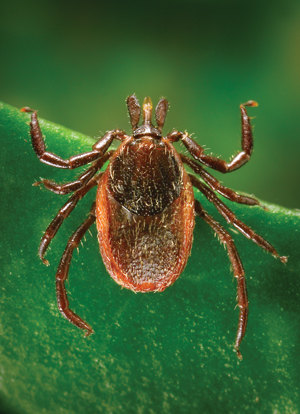New species of tick-borne bacteria causes Lyme disease
 Researchers at the Mayo Clinic in Rochester, Minn., have discovered a new species of tick-borne bacteria that causes Lyme disease. The new species, provisionally named Borrelia mayonii, after the clinic, has been found only in the upper Midwest but may be present elsewhere.
Researchers at the Mayo Clinic in Rochester, Minn., have discovered a new species of tick-borne bacteria that causes Lyme disease. The new species, provisionally named Borrelia mayonii, after the clinic, has been found only in the upper Midwest but may be present elsewhere.
Six patients with the infection were identified by the researchers. The patients had symptoms similar to, but not precisely the same as, those caused by Borrelia burgdorferi, until now the only species known to cause Lyme disease in North America.
Dr. Bobbi Pritt, the medical director of the microbiology laboratory at the Mayo Clinic, where the new strain was first detected, said that because the symptoms vary slightly from those normally seen in B. burgdorferi infection, doctors may not even think to test for Lyme disease.
Only one of the six patients had the bull’s-eye rash that is Lyme’s signature, present in 70 percent to 80 percent of reported cases. Three patients had a rash that was more spread out, Dr. Pritt said. The new strain apparently adds nausea and vomiting to the list of typical Lyme symptoms, which include fever, headache and neck pain. B. mayonii patients also had a higher-than-expected concentration of bacteria in their blood.
